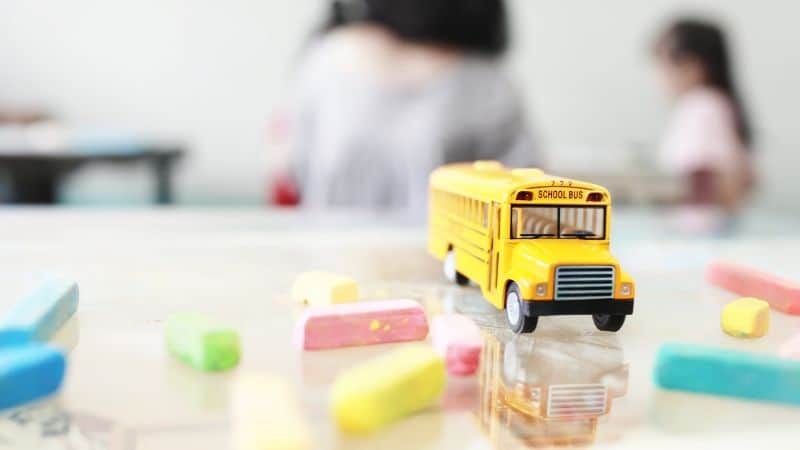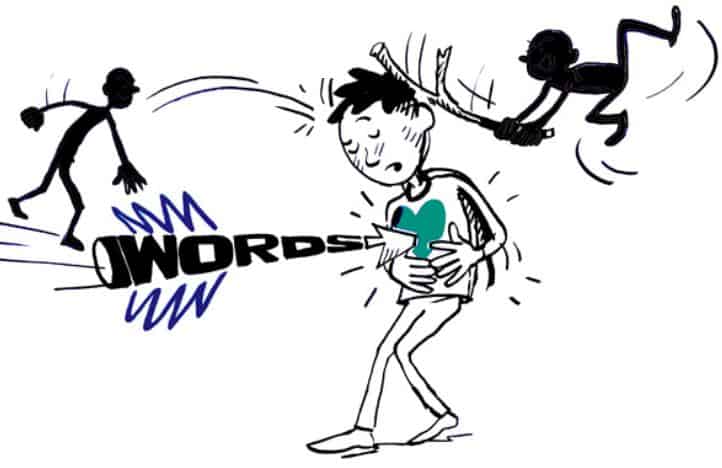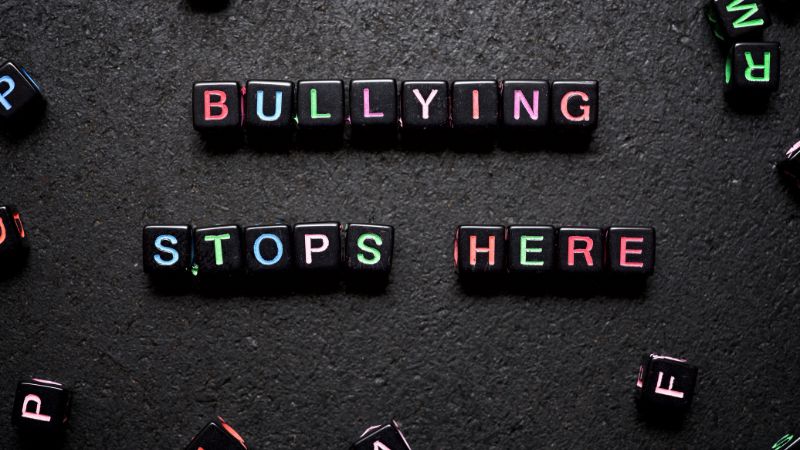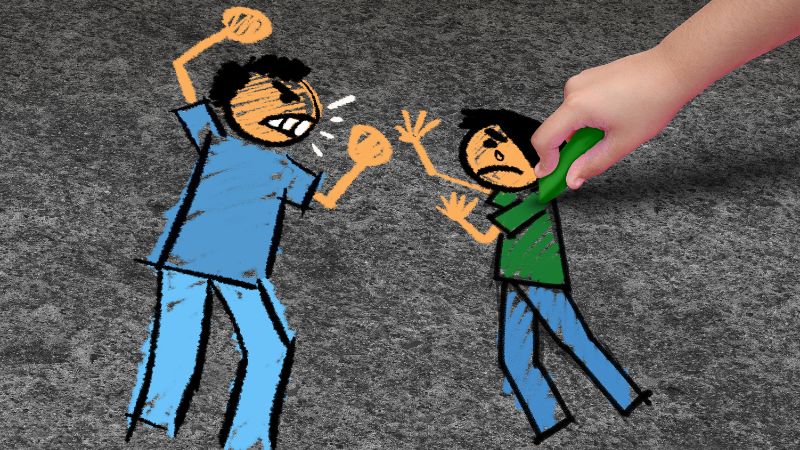Bullying is a major problem in the world and it touches all corners of our society, from our schoolyards to our online spaces. Bullying makes you lose self-respect, and it can leave deep wounds – emotional, psychological, and physical. It is widespread in the Philippines.
Seven of ten Filipino students have suffered bullying. Therefore, we must not consider any form of bullying as child’s play if we want to stop it.
We can stop bullying through education, malasakit, pakikipagkapwa-tao, proactive approaches, and legal remedies.
This essential guide about bullying is meant for everyone – students, teachers, parents, netizens, and even our local government officials.
This guide aims to help us understand what bullying really is, why it happens, and how it affects us. More importantly, it provides practical advice on how we can prevent and respond to bullying.
We can make our communities safer and kinder, both online and offline.
Let’s start this journey of understanding and empowerment together. Let’s say no to bullying, for ourselves and for each other.
“Bullying is so common that it’s viewed as almost ‘normal,’ but it should never be.”- Choi Si-won

What is bullying?
Bullying is a form of aggressive behavior that involves the repeated and intentional use of power, coercion, or force to intimidate, harm, or control another person who is perceived as weaker or vulnerable. It typically occurs in social settings such as schools, workplaces, or online platforms.
The effects of bullying can be severe and long-lasting for the victims. It can lead to emotional distress, anxiety, depression, low self-esteem, academic problems, and in extreme cases, even self-harm or suicidal thoughts.
It is essential to address and prevent bullying through awareness, education, and creating supportive environments that promote respect, empathy, and kindness.
Examples of Bullying
Imagine this – Ana, a grade-schooler, dreads recess time. Every day, her classmate Miguel taunts her about her glasses, calling her names like “four eyes”. She often hides in the library, her safe haven away from Miguel’s hurtful words.
Then there’s Carlo, a high school student who loves drawing. Some classmates find out about his passion and start spreading rumors, saying he copies his art from others. Carlo knows it’s not true, but the rumor spreads fast. He feels isolated, the joy of his craft replaced by shame and frustration.
Let’s also consider Maria, a diligent college student. Maria receives a series of nasty, anonymous messages on her social media, making fun of her dedication to her studies. The messages shake her self-confidence, making her question her worth and capabilities.
Lastly, there’s John, a local government employee who enjoys sharing about his day-to-day work on his Facebook page. One day, he finds a doctored, embarrassing picture of him being widely shared, attracting ridicule and laughter. John feels violated and humiliated.
Each of these stories involves a form of bullying.
It’s when someone, like Miguel, the high school students, the anonymous messenger, or the person sharing John’s picture, repeatedly hurts, threatens, or picks on another person.
As of now, it seems to me that the Anti-bullying law does not support college students and government employees in my example. But whatever the age and circumstances, the act of bullying is unacceptable.
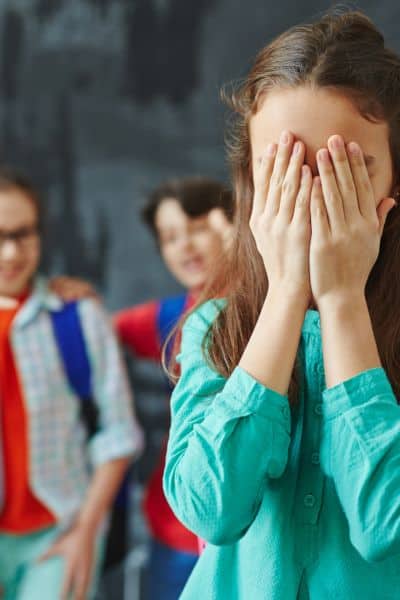
Ana, Carlo, Maria, and John – each one faced a situation that nobody should have to endure.
Ana had to cope with Miguel’s constant teasing about her glasses.
Carlo’s classmates spread false rumors about his artwork, undermining his passion and talent.
Maria became the target of a cyberbully who sent her anonymous, hurtful messages.
And John found himself at the mercy of an online troll who shared an embarrassing doctored picture of him on social media.
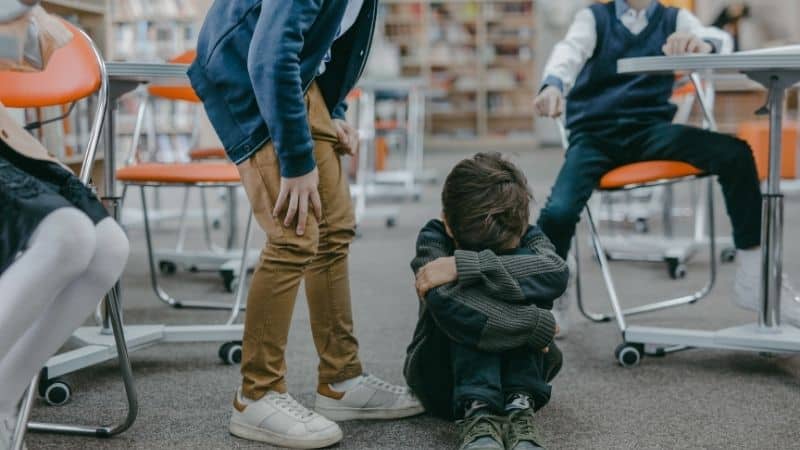
What is bullying?
Bullying is a form of aggressive behavior that involves the repeated and intentional use of power, coercion, or force to intimidate, harm, or control another person who is perceived as weaker or vulnerable.
Bullying can happen in a variety of contexts such as school, workplace, online (cyberbullying), and between peers or even between nations.
It often includes actions such as making threats, spreading rumors, attacking someone physically or verbally, and excluding someone from a group on purpose.
What each of these people experienced is called bullying, a repeated, intentional act of aggression, harm, or intimidation. Bullies find pleasure in seeing others in pain and in misery because this experience makes them see themselves as more powerful.
In all these cases, the bullies used their power, whether physical or social, to hurt and belittle their targets.
It doesn’t always mean physical harm.
It can take many forms. When Miguel teases Ana in school, that’s verbal bullying. When classmates spread false rumors about Carlo, that’s social bullying. And when someone targets Maria and John through their screens, that’s cyberbullying.
Cyberbullying is using digital platforms like social media, chat rooms, or even text messages to harass, threaten, or harm someone.
Unfortunately, bullying is a serious problem in many parts of the world, including here in the Philippines.
Studies indicate that more than 65 percent of Filipino students have experienced bullying in some form, either in school or online. There are many incidents of bullying in other countries. But the Philippines has more than three times more than the average.
In a Senate hearing, it was revealed that the Philippines is #1 among the 70 countries. That means we have the most cases, on average.
It is for every Filipino to understand what bullying is and how we can fight against it.
Remember, Ana, Carlo, Maria, and John represent people around us – our friends, classmates, colleagues, or even family members.
Through this guide, we aim to help everyone understand the nature of bullying better and provide effective strategies to prevent and respond to it.
Together, we can change these stories.

Bullying in Tagalog
There is no direct translation of bullying in Filipino or in Tagalog. That’s probably because the early definition of a bully is positive. Being a lover is positive.
At first, I thought it came from the word bull. But I cannot find the connection between a bull and a bully.
Anyhoo. Let’s try to explore how bullying is perceived in the Philippines.
A bully in Filipino is usually a maton or a siga. Siga is a tough guy and maton is a neighborhood bully. Both are known for their boldness. As I have mentioned in Bullying and Politics in the Philippines, these local versions of bullies eventually become politicians or are sought-after by politicians.
Kids do not always fear the siga and maton. They follow them. They want to become like this. Until they become their victims.
For victims, bullies aren’t just maton and siga. They become mapang-api. Someone who is mapang-api is oppressive.
Bystanders call a bully a siga or maton. Victims call them mapang-api and mapanakit (someone who hurts others).
There is another kind. The prankster or mapang-asar. This person can be a bully or not. The definition is based on whether the target person got offended or shamed. The general idea is that the mapang-asar only wants to have fun (at the expense of someone).
Based on these nuances, you can say that bullying in Tagalog is pananakot, pananakit, pang-aapi, pang-aasar, panunupil, and pang-aabuso. All represent the difference layers of bullying.
Discussing Cyberbullying and Wellness with Your Child
Understanding the Anti-Bullying Act of 2013: A Guide for Parents and Guardians
73 Anti-Bullying Slogans That Inspire and Persuade
Prevent a Culture of Bullying in Schools
Cyberbullying in the Philippines
The Many Faces of Bullying: A Closer Look at Its Forms
Means of Bullying
There are three means of bullying: Verbal, Physical, and Social. Each one can harm our children (and even us adults). Combined, these can destroy lives.
Living in the slums gets one exposed to more harm from abusers. Those who think lowly of themselves tend to bring other people down when they get the chance.
I am not saying that those who live in exclusive subdivisions do not bully others. Probably they do more cyberbullying than those who do not have internet access.
I can only speak from experience. I grew up a iskwater.
Contrary to a common belief, many Filipinos do not have access to technology. There is digital poverty in the Philippines.
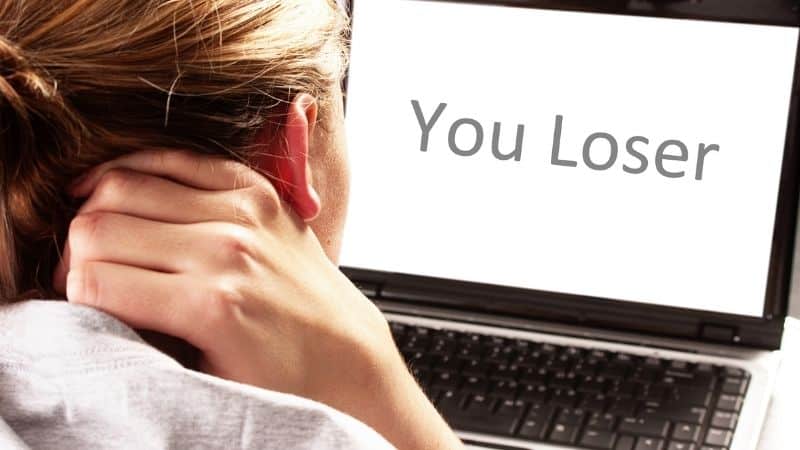
Verbal Bullying
Verbal bullying involves mainly insults, taunts, name-calling, and other types of verbal abuse. The politicization of social media and the proliferation of trolls made verbal bullying common on Facebook, Twitter, Titok, and other platforms.
Today, verbal abuse happens not only in the schoolyard. Adults are often some of the worst offenders. People can easily bash others.
Verbal abuse can ruin the spirit of a child who is on the receiving end. Bullies often get away with harmful words. They often say that they are just joking or simply having fun.
Verbal bullies often make people laugh at the expense of the victim. Some people do not outgrow the habit of poking fun at someone. They also bring the habit to work.
I knew of teachers who had the habit of verbally abusing students to get everyone entertained. I was a victim of that two when I was in high school.
Stand-up comedians often get paid for verbally abusing people. The young people who idolize them often imitate what they do. If only they could hear the painful cries of their victims.
Physical Bullying
Physical bullying is the use of physical actions to intimidate and gain control over a target. The physical actions are unwanted by the victim and can cause damage to their body or possessions.
Physical abuse is the most visible and identifiable form of bullying. It is rarely the first means employed by bullies.
Usually, they will verbally or socially bully a targeted child. When they can get away with these, they use physical attacks.
The bigger and stronger the bully, the more dangerous the attacks become – even if there is no intent to inflict serious harm.
The 13-year-old boy who bullied me when I was 10 started with verbal abuse. He called my female classmates ugly, pigs, dwarfs and iskwater. A few weeks after, he started striking smaller boys for no reason.
When caught, he said that we were playing.
Social or Relational Bullying
Relational or social bullying usually involves hurting someone’s relationships or reputation. It can be done alone on its own or in combination with physical, verbal, or cyberbullying.
Girls tend to use relational bullying more often than boys, especially during middle and high school.
Social or relational abuse is often unseen and hard to detect. Its impact is long-lasting. It diminishes a bullied child’s sense of self through ignoring, isolating, excluding, or shunning.
We Filipinos have a strong need to belong. We believe that pakikisama is a virtue that we need to become more valuable in society.
An ignored child, in school or at home, desires to be seen and recognized to feel valuable. Unfortunately, excluded children are often labeled weird, anti-social, or introverted. Introverts can make friends too.
Teachers must see to it that no child is isolated. We need to teach children to be welcoming of others.

The Negative Effects of Bullying
“People say sticks and stones may break your bones, but names can never hurt you, but that’s not true. Words can hurt. They hurt me. Things were said to me that I still haven’t forgotten.” –Demi Lovato
We need to learn more about the dangers of bullying because we want to build a just and humane society. We want to feel safe and secure. Unless we deliberately stomp it out, it will have a devastating impact on us – the victims, the bullies, and the bystanders.
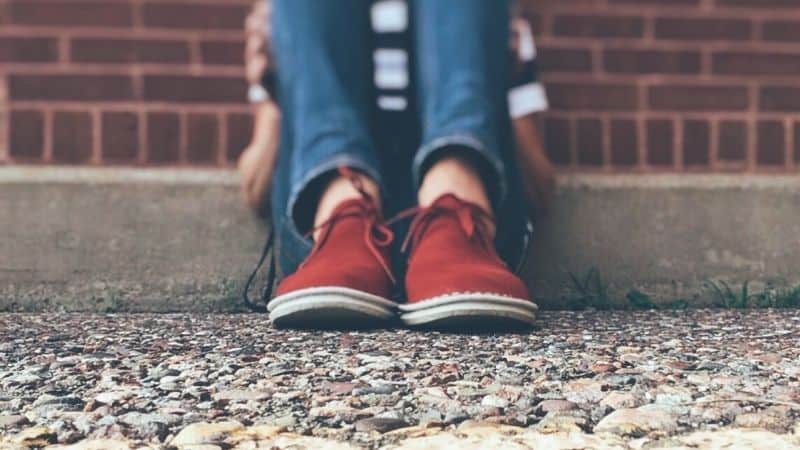
Low self-esteem and Learned Helplessness
Children regularly targeted by bullies often have social and emotional challenges. They find it hard to make friends and develop healthy relationships.
They tend to develop low self-esteem because they believe they are ugly, fat, and losers. As a result, they feel bitter, angry, helpless, frustrated, lonely, and isolated from their classmates.
The worst thing that can happen to children is “learned helplessness”.
Health Issues, Depression, and Suicide
Bumps and bruises are the typical effects. The cost of physical bullying is often heavier. Kids develop anxiety. And the stress on their bodies often results in a variety of health issues.
Some bullied kids suffer from prolonged depression. Worst, some of them have to commit suicide.
Failed Grades and Anxiety
Karlo was one of the top five students in my class during his first year in high school. Then, in his sophomore year, he started getting failing grades. He skipped classes and lost the motivation to study.
The school intervened. We found out that three senior high school students bullied him. They belong to a fraternity group, and they threatened him. He developed anxiety.
When confronted, the bullies said that they were just joking.
Students who do not have friends in school are often not motivated to study. Being isolated and excluded in playground games, for example, make someone feel unimportant.
Parents need to monitor children’s experiences in school.
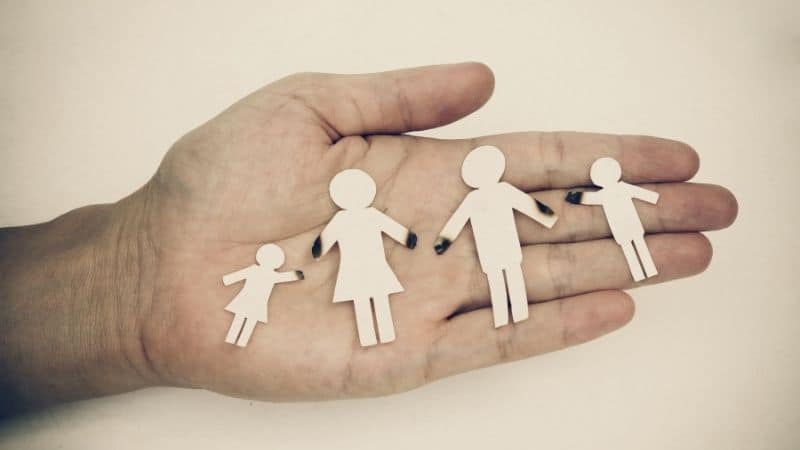
Unhealthy Family Relationships
Bullied kids often refused to talk to their parents and siblings. Some are too embarrassed to tell their parents that they are not accepted. Others think their parents cannot help them.
We cannot help our children if they don’t talk to us.
We encourage our son to be open and honest with us about things that happen in school.
We want him to know that bullying is not cool, and we can help him by telling us if anyone hurt him verbally or physically.
The Psychology of Bullying: Why it Happens
Let’s dive into the psychology behind bullying.
Why does it happen? What causes someone to hurt another person repeatedly?
These are complex questions, but understanding the root causes can give us valuable insight into how to prevent and address bullying.
Consider the following scenarios:
Juan, a fifth grader, was always the biggest kid in his class. He felt immense pressure to appear tough and strong. To maintain this image, he often picked on the smaller kids, using his size to intimidate and control them. This is an example of someone bullying for power and control.
Let’s think about Rosa, a teenager who grew up in a household where yelling and fighting were common. Rosa learned to use aggression to express her feelings and to handle conflicts. At school, she frequently got into verbal and physical altercations with her peers. This shows how one’s environment and upbringing can lead to bullying behavior.
Then there’s Miguel, a high school student desperate to fit into the popular group. To earn his place, he participated in mocking and excluding a quiet student from their class. Miguel didn’t enjoy it, but he did it anyway to feel accepted. This is an instance of peer pressure leading to bullying.
Lastly, consider Lara, a bright and charismatic girl who often made fun of her classmates online. Lara had a knack for finding people’s insecurities and making them the butt of her jokes. She didn’t realize or care how much her words hurt her classmates. This is an example of a lack of empathy leading to bullying.
Understanding these causes may help us start to develop effective strategies to address the problem.
The journey to a bully-free environment begins with understanding why it happens.
The Bully, the Bullied, and the Bystanders
Consider this story: In a bustling school canteen, Pedro, known for his tough demeanor, makes fun of Rina’s second-hand school bag, calling it ‘trashy’. Rina, shy and new to the school, feels embarrassed and hurt. Many students witness this incident. Some laugh along, some just watch, and others look uncomfortable but say nothing.
Pedro is the bully who repeatedly shames Rina, the bullied. The students laughing along, watching, or ignoring the situation are the bystanders.
Each character plays a role in this scene. We must understand these roles, so we can start to identify and address the problem when we see it.

In a bullying scenario, it’s important to remember that we’re dealing with people – individuals with feelings, fears, insecurities, and capabilities for change.
Each character in the story of bullying – the bully, the bullied, and the bystanders – plays multiple roles.
Let’s take a closer look at these characters to better understand their actions and feelings.
The person who bullies is just that – a person, not a villain.
Yes, they’re doing something wrong, something harmful. But labeling them as ‘bad’ can overlook the complexity of their situation.
For example, it’s possible that the child who bullies in school might also be a victim of bullying elsewhere, like at home or in their neighborhood.
This doesn’t justify their actions, but it helps us understand that their behavior might be a misguided response to their own experiences.
On the other side, the person who is bullied is not just a victim, but a person dealing with a difficult situation.
And while we might expect that they would be empathetic towards others who are bullied, this isn’t always the case. They could also stand on the sidelines, unsure of how to react or intervene when they see others being bullied.
This brings us to the bystanders. These individuals witness the bullying but are not directly involved. Their reactions can significantly influence the situation.
In the story of Pedro and Rina, the bystanders who laughed or watched without intervening indirectly contributed to the bullying.
But bystanders also have the potential to become heroes. By standing up against bullying, even in small, safe ways – such as getting help from an adult, or showing kindness to the person being bullied – they can help break the cycle of bullying.
Remember, every person in the story of bullying has the power to change the narrative. Especially the bystanders – you can be the hero who helps stop bullying in your school, online, or in your community.
Your actions can make a world of difference.
Bystanders can become upstanders by actively opposing bullying when they see it. This can involve directly intervening, supporting the victim, reporting the incident, or rallying others to disapprove of the bullying. It’s about shifting from passive observation to active participation.
Cyber Wellness: Online Safety
Cyber Wellness is all about using the internet and digital technology in a safe, responsible, and healthy way. It means understanding the risks and benefits of online activities and making smart decisions to protect ourselves and others.
Think about this: Do you remember the last time you spent a day without using your smartphone or computer?
Probably not, because these devices have become an integral part of our daily lives. We learn, communicate, work, and entertain ourselves using the internet.
But just as we need to take care of our physical health, we also need to look after our digital well-being, or cyber wellness.
So, how does cyber wellness relate to bullying?
Cyberbullying is a form of bullying that happens online or through digital devices. It includes things like sending mean messages or threats, spreading rumors online, posting hurtful or embarrassing photos or videos, or creating fake profiles to cause harm.
Let’s take an example: Imagine a student, Maria, who loves sharing her drawings on her social media. One day, a group of classmates start leaving hurtful comments on her posts, calling her art “ugly” and “worthless”. They even share her posts in their group chat to mock her.
This is a case of cyberbullying. If Maria knew about cyber wellness, she could take steps to protect herself online, like blocking the bullies, reporting their comments, or even reaching out to a trusted adult about the issue.
Here are some practical tips to maintain cyber wellness and prevent cyberbullying:
- Set boundaries: Decide what personal information you will share online. Avoid posting things that could be used to harm or embarrass you later.
- Think before you click: Before sharing or posting anything, think about the impact it could have on you and others. Is it respectful and kind? Could it hurt someone’s feelings or reputation?
- Protect your privacy: Use the privacy settings on your social media accounts to control who can see your posts and personal information.
- Stand up to cyberbullying: If you see someone being bullied online, don’t just be a bystander. Report the posts or messages to the website or app. You can also reach out to the person being bullied to let them know you support them.
Remember, maintaining cyber wellness is not just about protecting ourselves. It’s also about creating a positive and respectful digital environment for everyone.
25 Tips for Online Safety
Bullying Laws: Understanding Legal Protection
Let’s take a look at the legal framework surrounding bullying in the Philippines. This gives us an idea of how the law is helping to address this issue and protect individuals from such harmful acts.
Anti-Bullying Act of 2013
In the Philippines, the landmark legislation addressing bullying is the “Anti-Bullying Act of 2013” (Republic Act No. 10627). This law requires all elementary and secondary schools to create a Child Protection Committee (CPC) responsible for formulating an anti-bullying policy.
The Anti-Bullying Act covers physical, verbal, and social bullying, and demands that schools provide sanctions for bullying incidents.
However, it doesn’t specifically address cyberbullying.
Cybercrime Prevention Act of 2012
For this, we turn to another law: the “Cybercrime Prevention Act of 2012” (Republic Act No. 10175). This law includes cyberbullying under the umbrella of cybercrime, making it a punishable offense.
But what does this mean for victims and perpetrators?
For victims, these laws provide a sense of security. Schools are legally required to address bullying, providing a mechanism for students to report bullying and seek help. In the case of cyberbullying, victims can seek legal assistance and have the offensive content taken down.
For perpetrators, the law acts as a deterrent. Schools are required to enforce disciplinary actions for proven cases of bullying, while cyberbullies can face legal penalties under the Cybercrime Prevention Act.
Here’s a practical example: if Ana, a student, experiences repeated verbal bullying from Miguel, she can report these incidents to her school’s Child Protection Committee.
The committee, under the Anti-Bullying Act, is mandated to act on her report. If the bullying took place online, the Cybercrime Prevention Act could be invoked to penalize the perpetrators.
While these laws provide a strong foundation, it’s also crucial to foster a culture of respect and empathy both offline and online, where bullying is understood as unacceptable behavior.
It’s not just about the penalties—it’s about creating safer spaces for everyone.
Bullying Interventions
Let’s talk about ‘intervention’. Simply put, intervention means stepping in to stop something from happening.
In the context of bullying, it’s all about what we can do to prevent bullying, stop it when it’s happening, or help those who have been affected by it.
Intervention can be as simple as telling a teacher about a bullying incident you witnessed, or as complex as implementing school-wide policies to discourage bullying. It’s about taking action because doing nothing can sometimes allow the bullying to continue.
Now, let’s discuss how various individuals and groups can intervene and help stop bullying.
Students: If you’re being bullied, remember that it’s not your fault. Tell a trusted adult about the bullying. Keep any evidence, like texts or emails, and avoid retaliating. Instead, try to stay with a group of friends, as bullies often target individuals who are alone.
If you see someone being bullied, show your support. Stand up to the bully if it’s safe to do so, or report the incident to an adult.
For example, if you witness Maryann teasing Ana for her glasses again, you can tell her that her behavior is not okay and report this to your teacher.
Parents: Keep communication lines open with your children. Regularly ask about their day, their friends, and their experiences in school or online.
If your child is being bullied, contact the school to make them aware of the situation. Don’t encourage retaliation, but do help your child learn how to respond assertively.
If you find out your child is the one doing the bullying, it’s important to address this behavior right away.
Teach empathy and make sure they understand why their actions are hurtful.
Educators: Create a safe, respectful classroom environment. Implement a clear anti-bullying policy and ensure students understand it.
Take all reports of bullying seriously and respond promptly.
For example, if Maria tells you that she’s being cyberbullied, take her concerns seriously. You can help her report the bullies to the appropriate authorities and provide emotional support.
There is an urgent need to capacitate our schools. I encourage you to initiate.
Netizens: Everyone has a responsibility to make the online world a safe and respectful place. Avoid sharing or engaging with harmful content. Report cyberbullying when you see it.
Local Governments: Enforce anti-bullying laws and regulations, and support schools in their efforts to prevent and address bullying.
Promote public awareness campaigns about the harmful effects of bullying and what individuals can do to stop it.
Remember, everyone has a role to play in stopping bullying. We can all be part of the solution.
FAQS
Bullying References
If you are looking for references on bullying, I recommend the following:
The Bully, the Bullied, and the Bystander: From Preschool to HighSchool–How Parents and Teachers Can Help Break the Cycle. Barbara Coloroso will help you see the stories of people who played different roles in each bullying story. This will help parents, educators, and kids protect themselves. Buy the book here.
Kids Are Worth It is a talk by Cora Doloroso. Parents can learn how to keep their children intact. Watch the video.
Conclusion
A. Collective Effort in Combating Bullying
We all need to come together to fight bullying. This isn’t a fight just for one person. Parents, teachers, and students – we all have a part to play.
For parents, it’s important to talk with our kids, listen to their stories, and make sure they feel safe.
For teachers, let’s make our classrooms a place where every child is treated with respect.
And for students, let’s stand up for our friends, report bullying, and lend a hand to those who need it.
Our unity is our strength. We can make our homes, our schools, and our communities safer. We can stop bullying, but only if we work together.
B. Encouragement for Open Dialogue
Talking about bullying is just as important as standing up to it. When we speak up, when we share our stories, we shine a light on the problem.
Open Dialgue can help others understand what bullying looks like and how it hurts.
So, let’s talk. Let’s ask questions. Let’s share our experiences and learn from them. The more we talk about bullying, the more we can do to stop it.
C. Creating Safe Spaces and Promoting Respect
Just like we want to stop bullying, we also want to create a world where everyone feels safe, respected, and valued.
It’s not just about stopping the bad, it’s about bringing out the good too.
We need to educate ourselves, and others, about respect. We need to treat each other well, no matter how different we are.
This is how we create safe spaces. This is how we make sure that everyone feels like they belong.
In the end, fighting against bullying isn’t just about stopping hurtful actions. It’s also about promoting kindness and respect. It’s about creating a world where everyone is treated fairly.
Let’s stand up to bullying, let’s talk about it, and let’s work together to create a safe and respectful environment for everyone.
It’s a big task, but together, we can make a difference.

